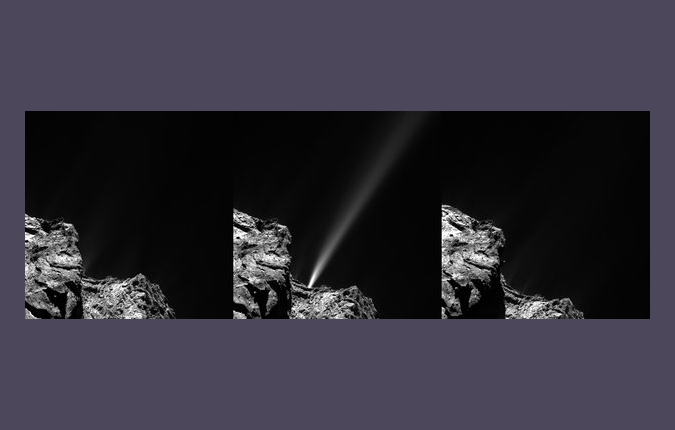|
|
Rosetta at Perihelion
11 August 2015
EIRNS—Europe’s Rosetta spacecraft, which has been accompanying comet 67P/Churyumov-Gerasimenko as it travels from the outer Solar System towards the Sun, will be close at hand tomorrow, when the comet reaches perihelion—its least distance from the Sun (115 million miles). Scientists estimate that at perihelion, the temperature on the icy comet could reach as high as 86 degrees Fahrenheit, and that large chunks of ice will boil off. Data from two of Rosetta’s instruments should The comet has been becoming more active as it heats up, and on July 29th, Rosetta’s instruments captured a dramatic, short-lived outburst of material shooting from the comet, when the spacecraft was at a distance of 116 miles above its surface. The instruments recorded dramatic changes in the chemical composition of the gases from the comet, compared with measurements two days earlier. In addition, apparently the fast-moving jet of material from the comet pushed the solar wind away from the nucleus for a few minutes, as observed by the Rosetta Plasma Consortium’s magnetometer. Scientists say there are no orbital changes that will be necessary for the perihelion encounter. Rosetta was moved to a higher orbit of 200 miles as the comet became more active, spewing out dust, so as not to confuse the star trackers that are needed for the spacecraft’s navigation. Scientists hope to see previously dark portions of the comet, that will be lit up as it approaches the Sun. Over the next couple of months, the activity on the comet will actually peak, as it moves away from the Sun, similar to the hottest days of Earth’s summer occurring following during the two months after the Summer Soltice. Then after about two months, with comet activity dying down, it should be possible to move Rosetta back to a lower orbit, and to see the impact the Sun had on the comet. Rosetta will follow along with the comet as it heads back to the outer Solar System until Sept. 2016, and then will collide with it. |


